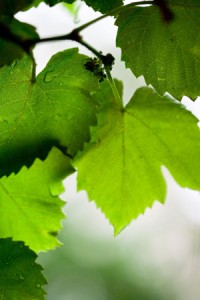
The essence of Beech is for those who are critical or intolerant of others, either occasionally or as a rule.
by Linda Crider —
When Dr. Edward Bach was developing his system of natural healing, he did not concern himself entirely with the symptoms presented by those who came to him for medical assistance. Instead, one of the key elements of Bach’s work was the consideration given to his patients’ diverse personalities and fluctuating moods. He insisted that emotional balance has a profound influence on disease pathology, as well as the healing process.
Many of his 38 flower remedies can be applied to balance a particular personality type or to simply diffuse a passing mood. The essence of Beech is for those who are critical or intolerant of others, either occasionally or as a rule.
One might cite a current catch phrase: “Diversity is our strength.” However, diversity also results in conflicting approaches to religion and spirituality, social and political topics, moral interpretations and so on. Given this fact, perpetually colliding thoughts and opinions are bound to occur. Human nature being what it is, we sometimes find ourselves looking askance at those who do not see things as we do.
Some individuals constantly exhibit the tendency to be overly critical of others. Even folks who are usually nonjudgmental have moments when they frown at someone else’s thinking, driving, taste in clothing, manner of speaking, eating habits, etc. It is for these personality types and momentary lapses in judgment that Bach formulated the essence of Beech.
Bach scholars suggest that individuals in the unbalanced Beech state subconsciously believe that they cannot feel right about themselves unless they are proving that someone else is wrong or deficient in some way. Everyone loses here, since this lack of harmony in an individual leads to feelings of separation that can manifest as emotional problems and eventually physical diseases. In the words of author Mechthild Scheffer, when we take Beech, “Little things will cease to irritate because we will be more and more able to recognize the unity that lies in variety.”
Perhaps the Beech tree provides us with another lesson from the plant kingdom. It blooms in the spring, and unlike some other species, the male and female flowers develop on the same tree. They manage to coexist well enough; so perhaps another message is here for those of us who, like Dr. Bach, take our cues from nature.
We see examples of “Beech-y” behavior leading to resentment between parent and child, supervisor and employee, husband and wife, neighbors or neighboring countries. This flower essence should be referred to as “tolerance medicine” or “why can’t we all get along” drops. After all, it is just this refusal to “agree to disagree” or “live and let live” that is at the root of much stress in everyday situations, as well as in more serious issues facing the planet today.
Linda Crider has been a promoter and educator of botanical healing practices for 15 years. She specializes in flower essence therapy and is a Bach Foundation Registered Practitioner and founder of Blooming Vibrations, LLC. 602-774-2382 or www.bloomingvibrations.com.
Reprinted from AZNetNews, Volume 30, Number 3, June/July 2011.





February 24, 2012
Bach Flower remedies, June/July 2011 Issue